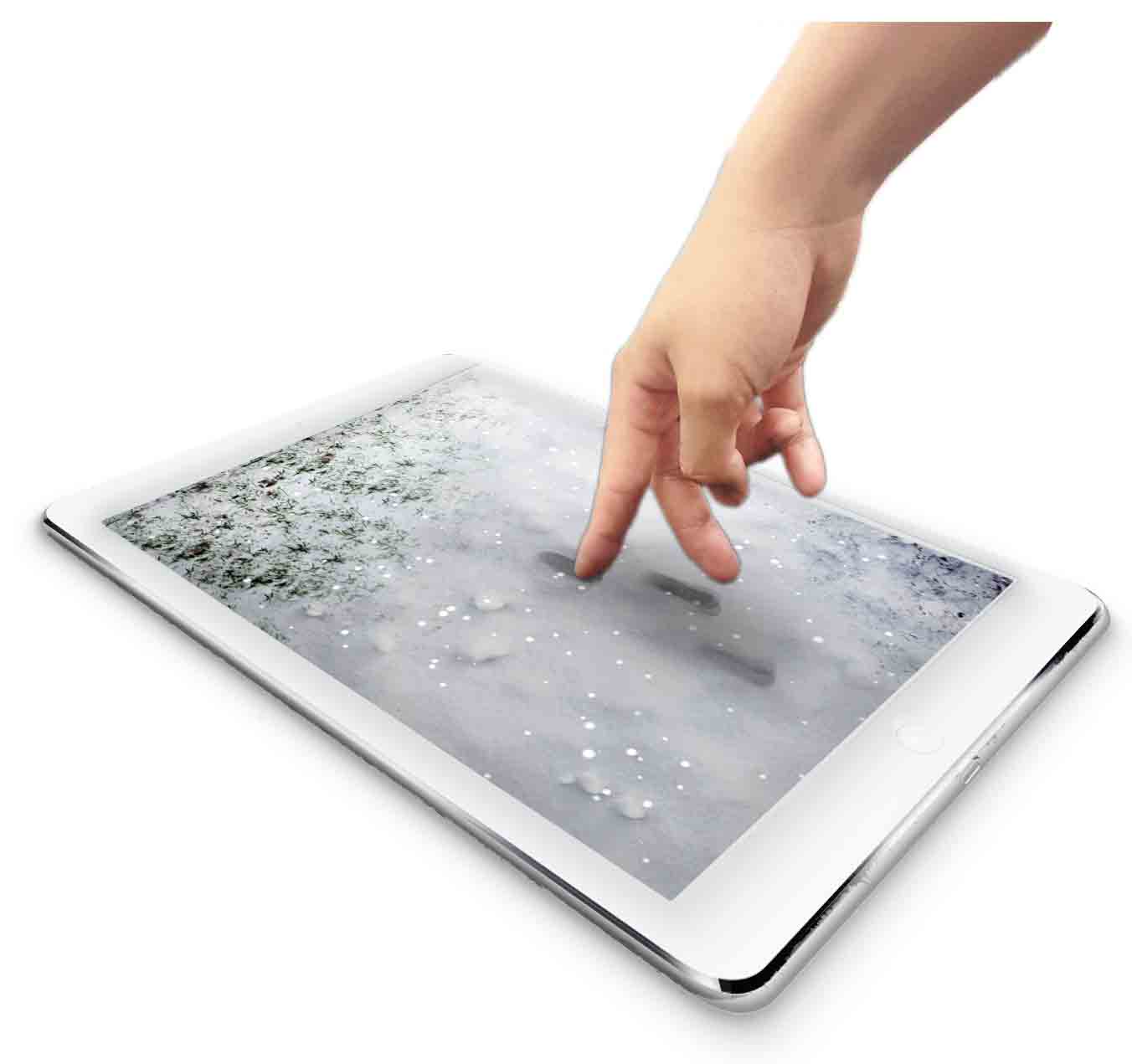Emerging Technologies Talk
|
FCFull Conference Pass (FC - All Days)
FC1Full Conference Pass (FC - 1-Day Only)
BCBasic Conference Pass
ExExhibits Only
ETElectronic Theater Ticket
RTReception Ticket
|

Yubi-Toko: Finger Walking in Snowy Scene using Pseudo-haptic Technique on Touchpad
“Yubi-Toko” is a touch panel system in which users can walk in a snowy scene using their fingers and feel the difficulty in moving forward as generated by the pseudo-haptic technique. This study explores the possibility of providing users with a pseudo-haptic effect using a touch panel. Pseudo-haptics encompasses a cross-modal effect between the visual and the haptic senses. The illusion is produced by an appropriate sensory inconsistency between the physical movement of the body and the observed movement of a virtual pointer. However, an overly large discrepancy between the visual and the proprioceptive information makes users feel something “odd”. Thus, it is difficult to evoke pseudo-haptics for conventional touch panels because of the noticeable difference in movement between an input finger and a pointer. Another problem is that the pointer on a touch panel is often occluded by the user’s finger, making it difficult to use. In this study, we aim to provide users with a pseudo-haptic sensation through a background image instead of a pointer as visual feedback. It is assumed that even if the effect of sensory conflict is small, many of them during repetitive movement would make users feel a pseudo-haptic sensation. We applied this idea to a locomotion interface using anthropomorphic finger motion on a touch panel. By changing the ratio between the displacement of the finger and the amount of scroll of the visual ground, we would like to provide users with pseudo-haptic feedback as the perception of difficulty in moving forward. Walking on the virtual ground by scrolling down the display is a short-term iterative finger movement, and thus, many small inconsistency effects would be effective. The occlusion problem does not occur because the full screen is used as visual feedback.
Presenter(s)
Yusuke Ujitoko,The University of Tokyo
Yuki Ban,The University of Tokyo
Takuji Narumi,The University of Tokyo
Tomohiro Tanikawa,The University of Tokyo
Koichi Hirota,The University of Electro-Communications
Michitaka Hirose,The University of Tokyo

